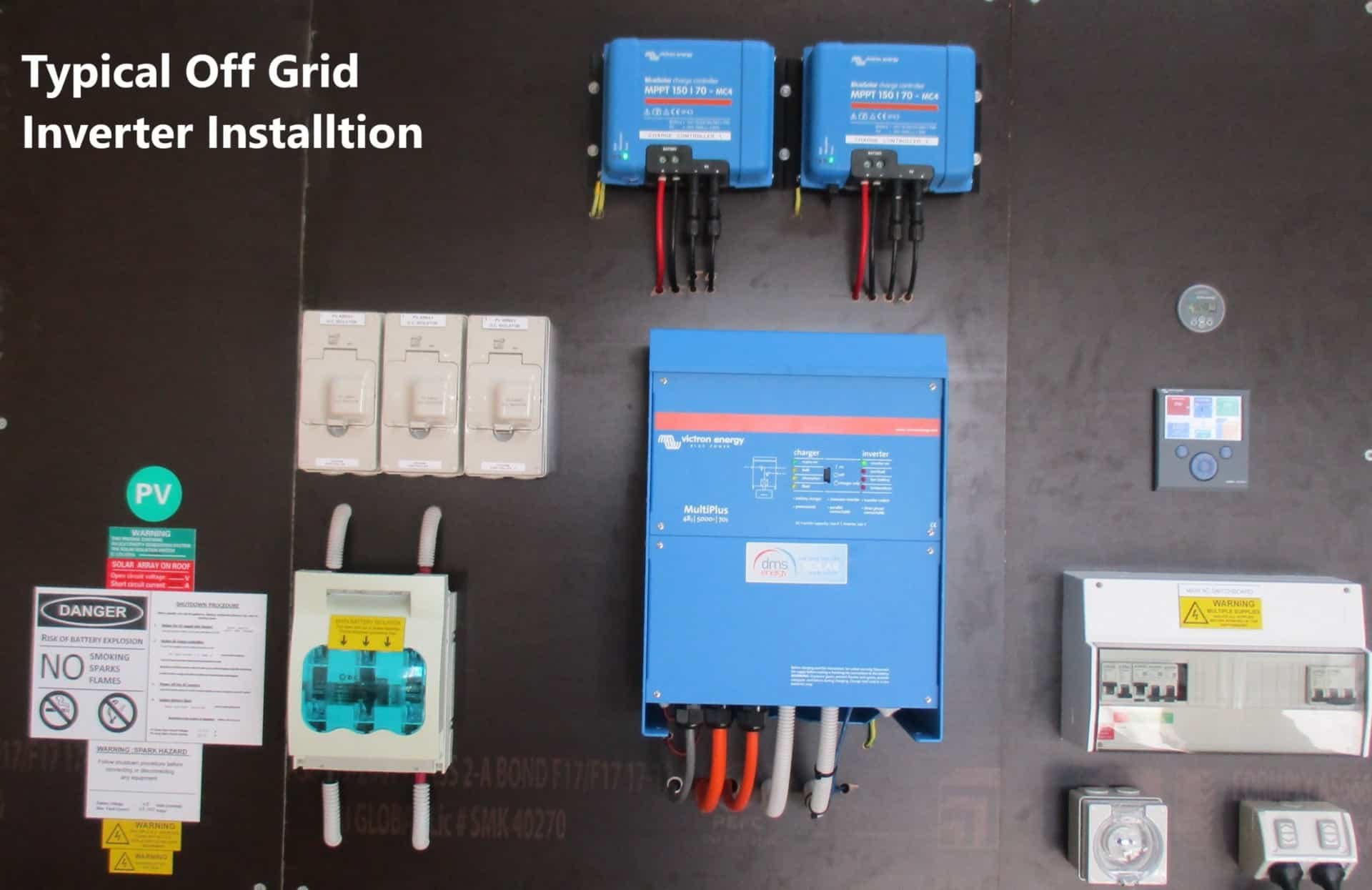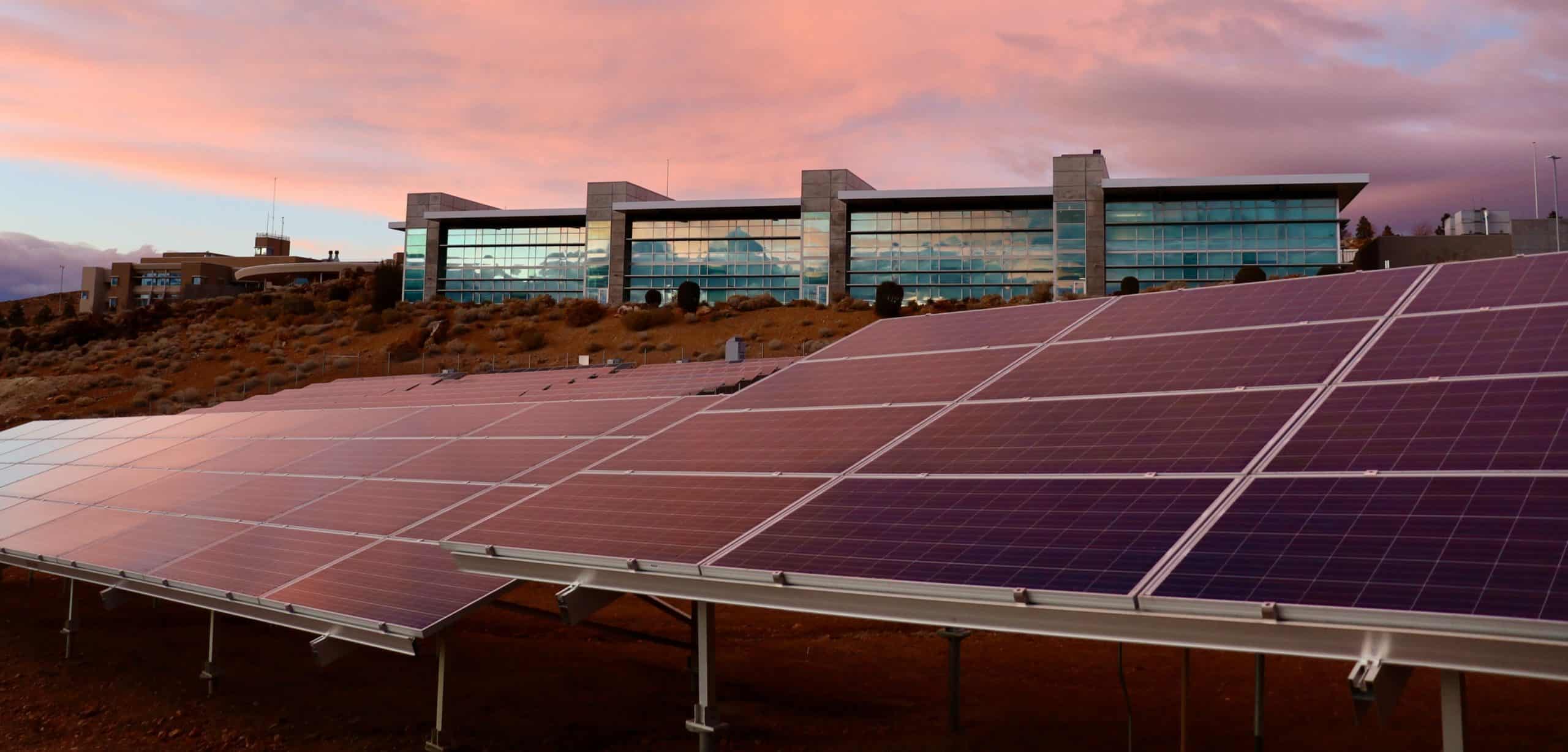Save Now, Pay Later.
With flexible payments from handypay.
Save Now, Pay Later.
With flexible payments from handypay.
Published

You won’t find this on any official calendar as I’ve just made it up. But I thought I would talk over the next few weeks about off grid power systems and how it works and the different ways we can go about it.
First what is an off grid power system?
Essentially this is an electricity generating system of components that can provide an energy source that we can put to work. When I say work I mean, energise lights, refrigerate food, cook food, pump water, keep us warm and drive motors etc.
When do we need an off grid system?
Most of client’s motivation to go off grid is the cost of connecting their property or site to mains or grid power. With ever increasing costs to connect to the network in many cases it is a no brainer to put in an off grid system. Other times it’s not so clear cut and from a financial perspective if the costs of connecting to the grid are the same or not much more than going off grid then grid connection usually becomes the obvious answer.
What can an off grid power system power up?
The answer is virtually anything. DMS energy have powered up resorts, farms, large homes, small homes and shacks with ease. There is no limit really to want an off grid power system can energise.
Generally speaking an off grid system will be harnessing an available source of energy available on the site it’s trying to support and all we are really doing is capturing, converting and storing that energy.
The energy sources we are usually tapping into are solar power converting the sunlight into usable energy. Wind power which is harnessing kinetic energy from wind. Hydro generated energy which like wind is also capturing kinetic energy.
Much rarer is geothermal and that is using heat energy from the earth and another rare type of use of an energy source is wave technology.
Wind and hydro play a big part in states overall energy generation capacity but both of these energy sources in smaller forms can be used quite successfully for off grid system but they really are better utilised in utility sized formats. Wind and Hydro make more sense in the bigger more commercial utility size. That scale of economy these bigger projects bring overcomes many of the shortfalls wind and hydro have when used in smaller roles.
This brings us to solar and this is the easiest and most dependable of the small scale off grid generation sources. It lasts a long time, no maintenance or moving parts other than the occasional wash.
DMS Energy is the largest installers of LG solar panels in the state along with other quality brands.
We have looked at our energy sources now what other components do we require?
Storage is the next thing. It’s great having this free energy but how do we store it so that we can use it later when the sun goes down? The answer is batteries. There are quite a few different technologies and chemistries to choose from. This ranges from
Lead Acid and Lithium which are the most common types used.
Flow batteries not so widely used but quite an impressive technology.
There is also NiCad but that’s very rare these days and very old technology invented by Edison himself is Nickle Iron batteries and these aren’t really used that much either in Australia but have quite a following around the world.
DMS Energy primarily uses Sungel for lead batteries, PowerPlus for lithium and we currently putting in a huge installation of Redflow flow batteries but we will talk about the pros and cons of different chemistry’s another week.
Another form of energy storage that is overlooked is thermal storage. We can heat water and store in insulated tanks to use later on. It could be said it’s the worlds cheapest, lowest tech energy storage device.
We generally will require an inverter. Solar panels put out direct current or DC and all batteries are direct current. Our cars use direct current but our houses use alternating current or AC. The inverter is the device that converts DC to AC and in off grid quite opted converts AC back to DC from a generator to charge our batteries as well. We use mainly use Victron inverters.
Talking about AC and DC is going to be important for next week when we talk about AC coupling and DC coupling which are different ways of configuring off grid solar systems.
Today we have talked where we are sourcing our energy from for off grids. We have touched on how we store our energy and what we need to convert DC to AC so we can use it our home.
Next week it will be AC coupling vs DC coupling. There are quite a few misconceptions regarding this in the off grid world.
For all your off grid needs call DMS Energy on 1300 502 599 or pop into 56 Sheffield Rd in Spreyton. DMS Energy is also the largest sellers of Victron equipment on the North-West Coast so we can help you out with that next solar project whether big or small.

Simple, Low Rate Green Loans

Introducing award winning finance provider, Handypay, to bring you the most Competitive, Flexible and Versatile finance solution available in the home improvement industry today!
We have partnered with Handypay so customers can access a simple, affordable green loan for their solar panels and home batteries. Get a no-obligation quote and pre-approval in minutes, not weeks.
DMS Energy strives to Honestly, Ethically and Accurately assist Tasmanians to meet their energy reduction goals.
DMS Energy have advised countless locals on the right energy solutions for their home’s and business’s.




DMS Energy are not your typical energy efficiency salesmen! We are long time locals offering expert advice on solutions that are tailored to your individual needs. Talk to one of our experts today.